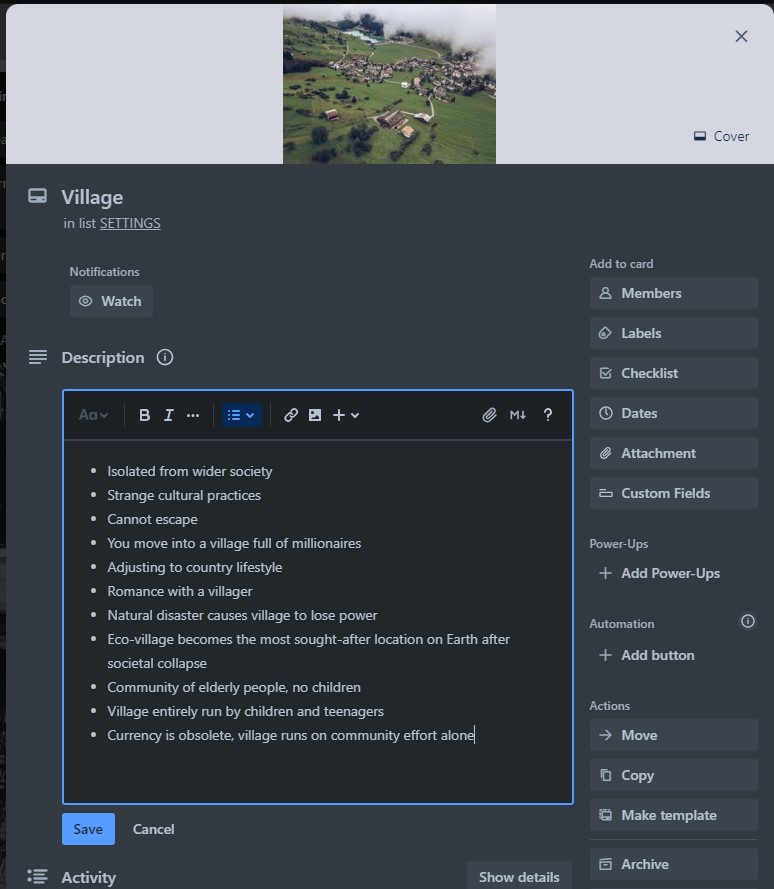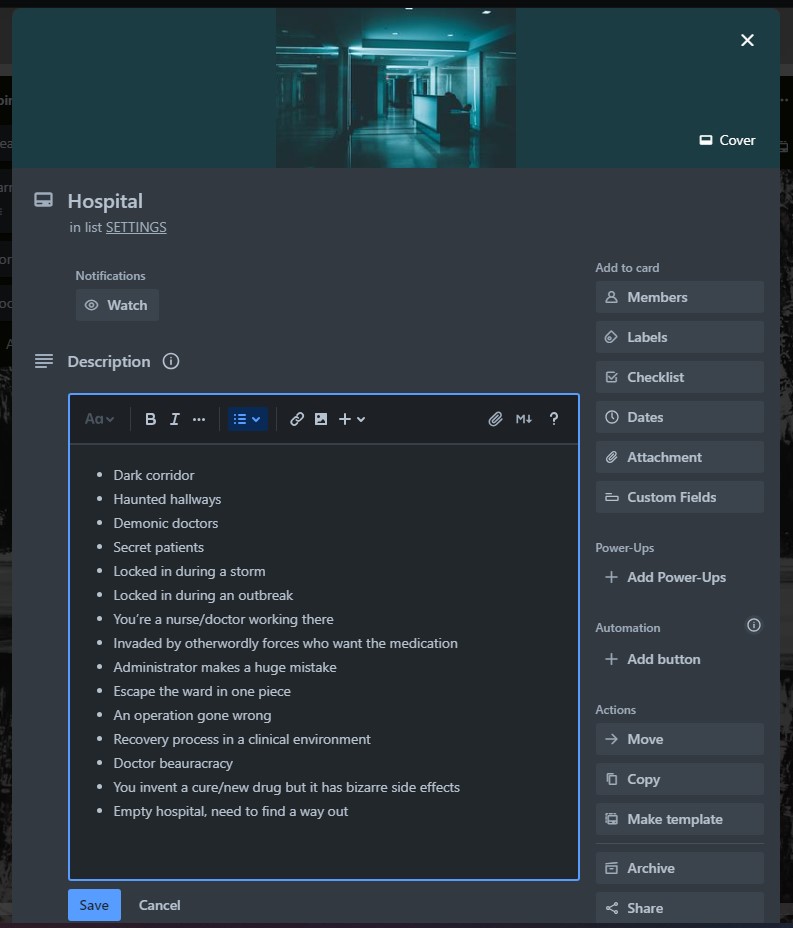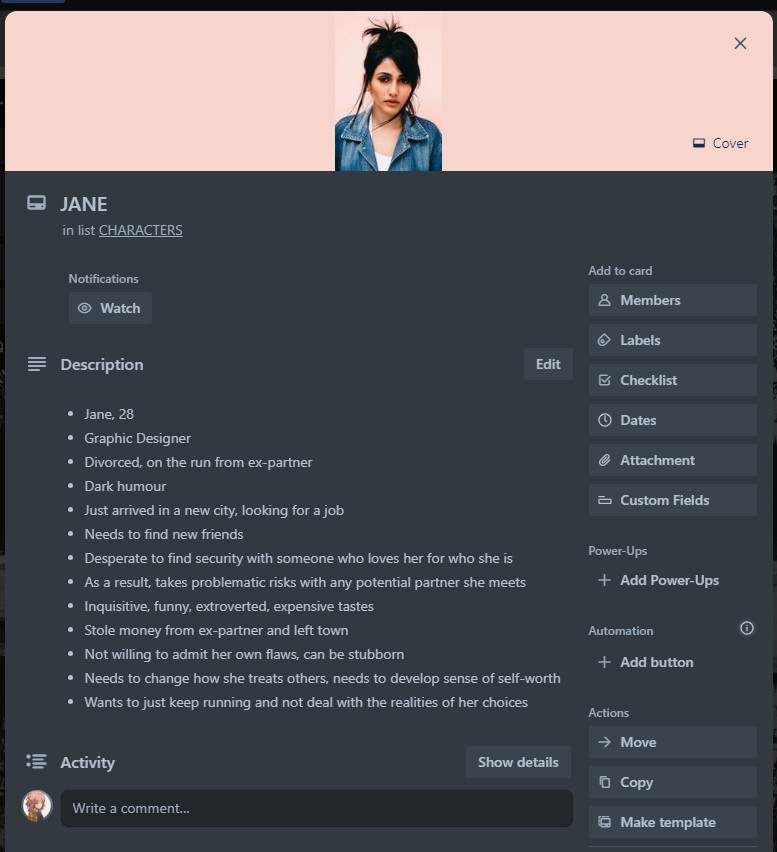If you’re getting ready for a NaNoWriMo challenge, you might be working on your Preptober strategy. The month before NaNoWriMo officially kicks off is a great time to set up your writing space, organise your toolkit and work out a schedule. Once you’ve done that though, it’s time to start thinking about your novel itself. There’s a lot of preparation you can do in terms of your setup, but what about the actual story you’re going to write? This post will help you come up with some exciting plot ideas for stories that you can put your own spin on this NaNoWriMo.
You might be the kind of writer who doesn’t plan too far ahead when it comes to your writing. That’s a completely valid way of working and one I’ve implemented myself in the past. However, if you’d prefer to have some sort of structure or baseline in place, now’s a great time to start.
Finding a plot idea that you really care about or are enthused by is vital to your story. Sometimes that’s hard to do though. Especially if you’ve got lots of different ideas and aren’t sure which one to run with.
Pinning down one specific story idea that you can work with for thirty days is something to consider ahead of November 1st. With that in mind, here are a few things to think about when doing so.
Plot ideas for stories you’ll care about
Use a notebook or digital planning tool to dump all of your existing ideas onto. Don’t go into too much detail, just get them out onto a document. I like to put mine onto different sticky notes and explore them on a large sheet of paper.
Next, select the three ideas you feel most drawn to. Put them onto their own document. For each one, look closely at the idea and try to draw out the core message you’re trying to convey. What does each idea have to tell the reader? What’s the emotional core of that potential story? When you’ve worked that out, write it down underneath each one.
Consider these messages. Which of them speaks to you the most? Which journey do you really want to take your readers on? Ultimately, your plot idea has to go somewhere. The story needs to take your reader from the starting point to an outcome of some sort. Whatever that outcome is, the central thread of your message should run throughout, until it reaches the desired conclusion.
Ask yourself what you care about. What matters to you most about this writing? That way, you’ll identify a core concept that you’ll be more inclined to stick with when the going gets tough during the writing process.

Generating new story ideas
If you don’t have an idea for your novel’s plot in mind already, you can start with some plot generation tricks. One way of coming up with different and new plot ideas is to do some quick visual concept generation.
To do this, pull up some writing prompts, or better yet, some photos of various unusual settings. Add each one to a Trello card, and then set a timer for five minutes per card. Use the image to create a list of bullet points based on what you see in the picture. Don’t overthink it. Just write down as many different ideas per picture as you can think of.
You can repeat this exercise with images of characters, for some deeper idea generation. Grab a few free stock images of different people, animals, creatures, or whatever you prefer. Create a new column on Trello for characters and then spend five minutes per card developing lists of ideas. If you’re unsure of how to get started, here are a couple of examples.
Settings-based plot idea generation


These are just a couple of quick examples that could help you generate some plot ideas for stories set in a hospital or a village. You could replicate this exercise with various images to help kickstart some premise or location-based ideas.
Character-based plot idea generation


As with the settings-based idea generation, developing characters in this way is also quick and helps get your thoughts firing. You can always change names and details later, but allowing your mind to plot ideas freely within a five-minute window can throw up some surprising results!
I used Trello’s built-in Unsplash photo tool to generate cover images for these two characters. From there, I simply planned a set of simple needs, wants and minor backstories to create the characters. I was also able to link them to each other a little, establishing an existing relationship I could explore later in my writing.
Story ideas as a one-sentence premise
Once you’ve done some idea generation, try to identify which settings and characters you feel most drawn to. Also try and line this up with the core message of your story, which you’ll need to establish as your overarching plot.
Ensuring you’ve done plenty of character development work before doing this is also useful. Strong stories are always driven by well-designed characters. So, putting the time in to build your protagonist at the very least will make a big difference.
With these in place, try to distil your story idea into one action-packed premise. Preferably, this should just be one sentence that gives as much detail as possible.
Keep it concise, because practicing how to communicate your story premise quickly and succinctly will help you explain it to others. That might not seem important right now, but if you do want to try and publish your novel, it’ll help you out a great deal if you can explain your plot in one sentence!
Some examples could be as follows.
- A renegade warrior flees a cannibalistic society after rejecting their culture’s way of life but must fight for survival as they make their escape.
- A hospital finds itself under siege from a hostile force that wants to empty it of medical supplies, which the staff must prevent from happening.
- The relationship between two childhood friends is tested to its limits during a political conflict that divides their land and descends into civil war.
Other plot ideas for stories
Sometimes, you just need a few prompts to give you a nudge in the right direction. Here are a few different plot ideas for stories that you could use to develop your novel or narrative’s plot.
- A family secret is uncovered and the elders must do some damage control.
- Mobile phones become sentient and start to feed off the attention you pay them, with disturbing results.
- Navigating heartbreak during a specific historical era.
- A heist set in a high-fantasy world.
- Criminality is rewarded and respectable behaviour is punishable in a dystopian society.
- A shocking encounter story told from two different perspectives.
- Fed up of being cut down, the trees decide to suffocate Earth, unless someone can convince them not to.
- All cities exist upon flying islands in the sky and are locked in a battle for resources from the dangerous world below.
- Gods and monsters go to war on an alien planet.
- A crisis of conscience leads a character to leak explosive secrets to the world’s press.
- A search and rescue story underwater that has dramatic consequences for the universe.
- A spellcaster curses a village and its inhabitants start hunting the people of the nearby towns.
What will your next story be about?
If you’ve been inspired by any of these plot-generation ideas, I’d love to hear from you. Let me know in the comments about your story concepts, especially ahead of NaNoWriMo. Coming up with a new and interesting idea for your novel can be tough. Try to remember though that truly original ideas are hard to come by.
It’s often how you put your own spin on an existing concept that can make your work stand out. Getting hung up on total originality can be a roadblock in itself! Instead, focus on plotting your novel’s world, designing compelling characters and exploring ways to give your idea unique and emotional twists.
If you’ve found this post helpful, please give it a share or pin it on Pinterest. You might also like this post on creative writing prompts to break through writer’s block.




